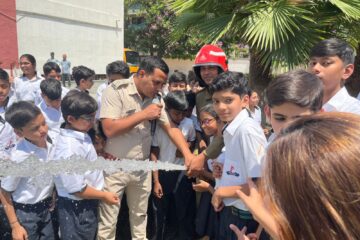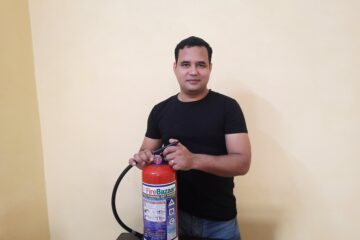Characteristics of a Good Fire-Fighting Delivery Hose
In the realm of fire safety, having reliable equipment is crucial to effectively combat fires and protect lives and property. One essential component of any fire-fighting arsenal is a high-quality delivery hose. A good fire-fighting delivery hose should possess several important characteristics to ensure optimal performance in critical situations. In this article, we will explore the key features that define a good firefighting delivery hose, emphasizing its durability, flexibility, pressure resistance, and compatibility. So, let’s dive in and understand the qualities that make a fire-fighting delivery hose exceptional.
Table of Contents
- Introduction: The Importance of a Reliable Fire Fighting Delivery Hose
- Durability: Built to Withstand Extreme Conditions
- Flexibility: Maneuverability in Challenging Environments
- Pressure Resistance: Maintaining Integrity under High Pressure
- Compatibility: Seamless Integration with Firefighting Equipment
- Conclusion
- FAQs
Introduction: The Importance of a Reliable Fire-Fighting Delivery Hose
When it comes to fire safety, time is of the essence. A dependable fire-fighting delivery hose plays a vital role in efficiently delivering water or fire retardant to extinguish flames swiftly. It acts as a lifeline for firefighters, providing them with a steady supply of water while allowing them to maintain a safe distance from the fire source. To fulfill this crucial role, a fire-fighting delivery hose must possess certain characteristics that enable it to withstand rigorous use, extreme conditions, and high-pressure situations.
Durability: Built to Withstand Extreme Conditions
A good firefighting delivery hose must be built to withstand the demanding conditions encountered during firefighting operations. It should be constructed from high-quality materials that are resistant to abrasion, impact, and exposure to chemicals. Reinforcements, such as synthetic fibers or wire spirals, are often incorporated to enhance the hose’s strength and durability. Additionally, the outer layer should be resistant to heat and flames, ensuring that the hose maintains its integrity even when subjected to intense heat.
Flexibility: Maneuverability in Challenging Environments
Firefighters often face complex and challenging environments where agility and maneuverability are paramount. A good fire-fighting delivery hose should offer flexibility, allowing it to be easily maneuvered around obstacles and tight spaces. The hose should have a low coefficient of friction to minimize friction loss and enable smooth handling. This characteristic ensures that firefighters can effectively navigate through confined areas, maximizing their efficiency and effectiveness in combating fires.
Pressure Resistance: Maintaining Integrity under High Pressure
Firefighting operations often require water to be delivered at high pressure to extinguish flames effectively. A good firefighting delivery hose should be designed to withstand these elevated pressure levels without compromising its structural integrity. It should have a high burst pressure rating, ensuring that it can handle sudden increases in pressure without rupturing. Reinforcements within the hose play a crucial role in maintaining its shape and preventing excessive expansion, guaranteeing reliable performance even under extreme pressure conditions.
Compatibility: Seamless Integration with Firefighting Equipment
Interoperability is vital in any firefighting operation. A good firefighting delivery hose should be compatible with various firefighting equipment, including hydrants, pumps, nozzles, and connectors. Standardized coupling systems, such as Storz or National Standard Thread (NST), enable seamless integration between different components. This compatibility ensures that firefighters can easily connect and disconnect the hose, facilitating rapid deployment and efficient coordination during firefighting operations.
Conclusion
In conclusion, a good fire-fighting delivery hose possesses key characteristics that make it reliable and effective in combating fires. Its durability allows it to withstand extreme conditions, while its flexibility enables maneuverability in challenging environments. Pressure resistance ensures that the hose maintains its integrity under high-pressure situations, while compatibility ensures seamless integration with firefighting equipment. By considering these essential qualities, firefighters can select a fire-fighting delivery hose that meets their specific needs, enhancing their ability to protect lives and property.
FAQs
Q1: How often should a firefighting delivery hose be inspected?
A1: Regular inspections are essential to ensure the integrity of the hose. It is recommended to inspect the hose at least annually and perform additional inspections after each use or as per the manufacturer’s guidelines.
Q2: Can a firefighting delivery hose be repaired if damaged?
A2: Minor damages can often be repaired, but it is generally recommended to replace the hose if significant damage or wear is observed. Repairs should only be carried out by trained professionals using approved methods and materials.
Q3: Are all firefighting delivery hoses the same size?
A3: Firefighting delivery hoses come in various sizes, commonly ranging from 1.5 inches to 3 inches in diameter. The appropriate size depends on the specific firefighting application and the required water flow rate.
Q4: What is the lifespan of a firefighting delivery hose?
A4: The lifespan of a firefighting delivery hose can vary depending on factors such as usage, maintenance, and environmental conditions. Generally, hoses should be replaced every 5 to 10 years or as recommended by the manufacturer.
Q5: Can a firefighting delivery hose be used for other purposes besides firefighting?
A5: Firefighting delivery hoses are specifically designed for firefighting operations and should not be used for other purposes. Using them for non-firefighting applications may compromise their integrity and effectiveness.

